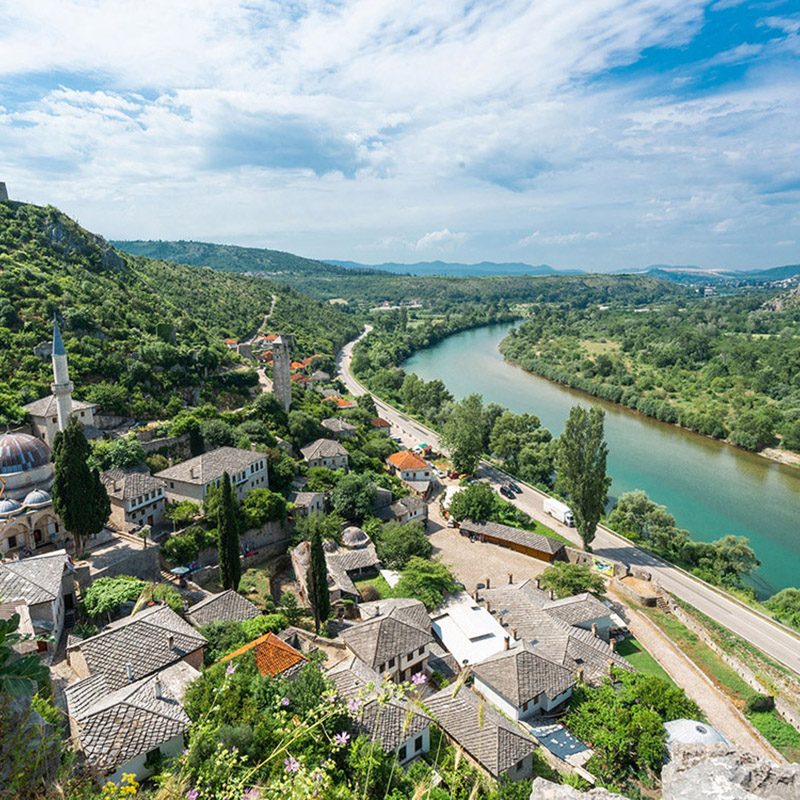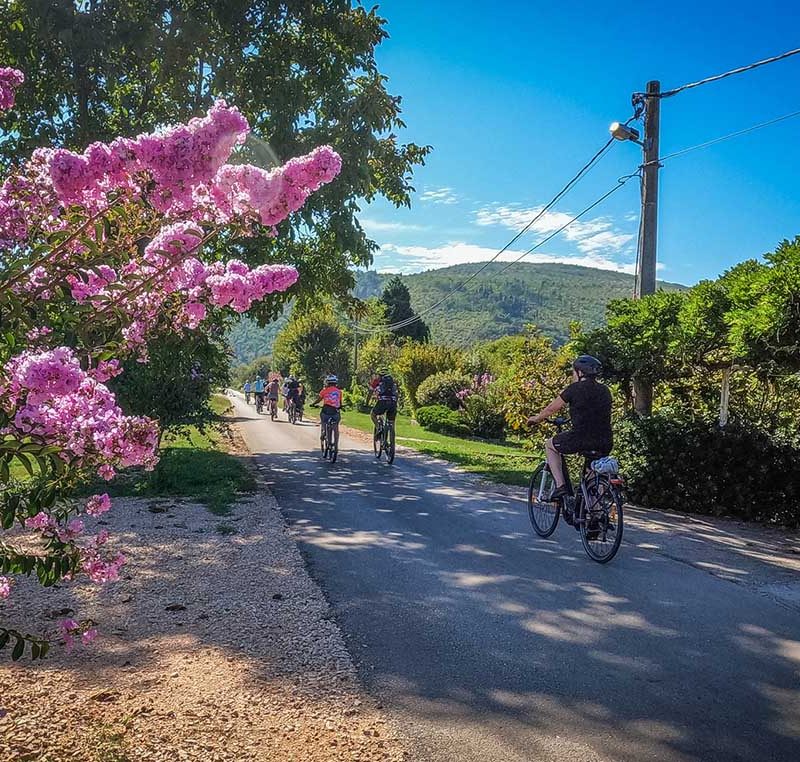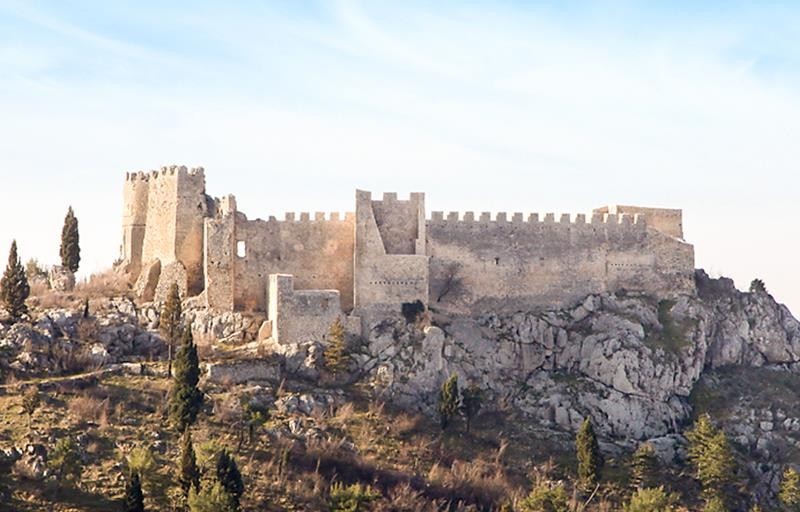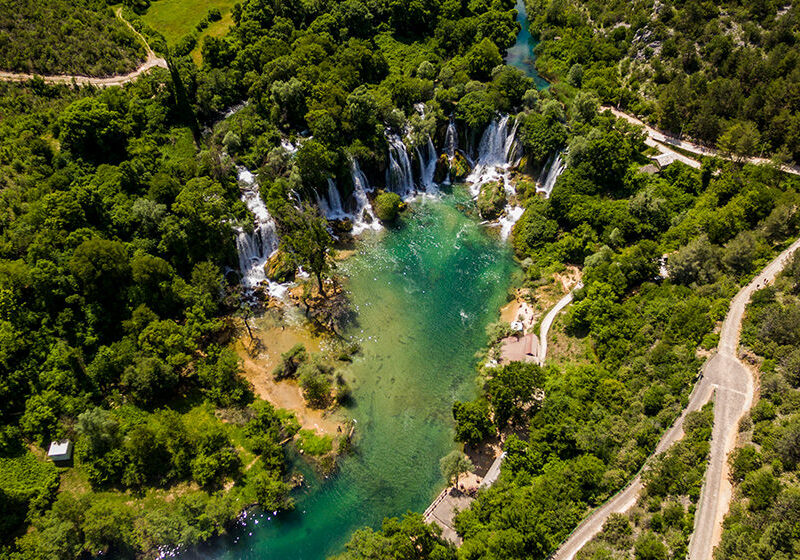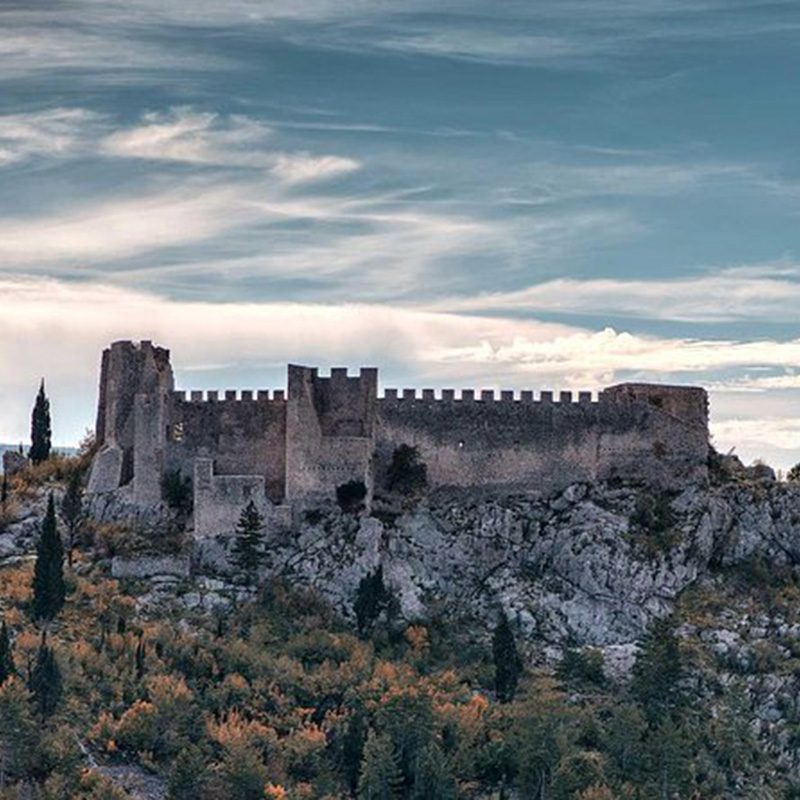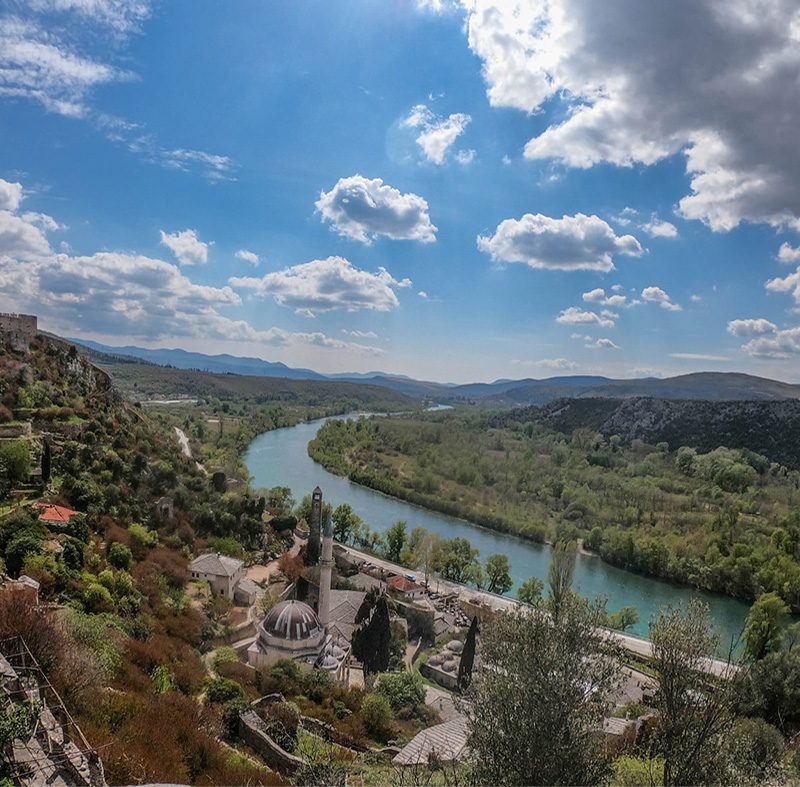Ljubuški lies on the left side of the river Trebižat, a river that makes one of the most beautiful waterfalls that can be seen throughout Bosnia and Herzegovina, and the most famous are Kravica and Koćuša.
In addition to its natural beauties, which give Ljubuški the epithet of a healthy gastronomic oasis, Ljubuški is also known for its significant cultural and historical heritage – in various localities you can find remains from almost every period of human history, of which it is worth mentioning: ancient Roman camp in Gračine, Humačka ploča, The old town of Ljubuški, and stećak tombstones in the necropolises in Studenci, Bijača and Zvirići.
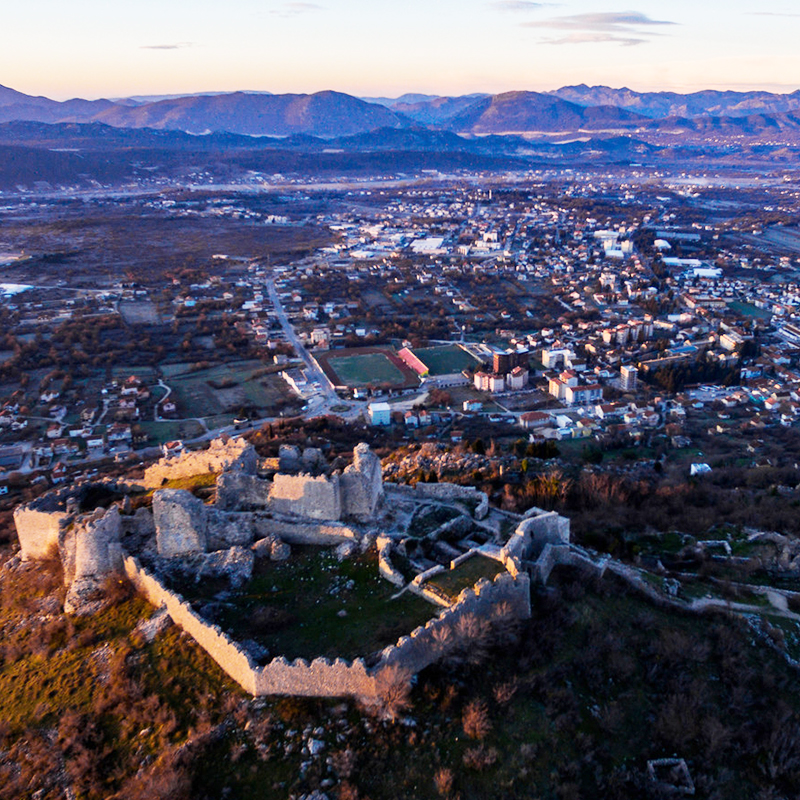
The story of Ljubuški
According to folk tradition, herceg (duke) Stjepan Vukčić Kosača started building the town of Ljubuški in honor of his wife Ljubuša, after whom, as the legend says, the town was named. In written sources, the name of the city was first mentioned in 1435 under the name “Lubussa”. It was only in the second half of the 19th century that Ljubuški was recorded on maps and plans by its present name. More recently, older documents mentioning the church and monastery in Ljubuški on 15th February 1435, have been found in the Dubrovnik archives.
The area of Ljubuški, as demonstrated by numerous historical remains, has been a very desirable place for settlement since ancient times. The first inhabitants in the Ljubuški area were the Illyrians-Daorsons tribe who settled in the Trebižat valley. The Daorsons were later expelled by the hostile Ardiaei tribe and the Delmatians, who were shortly settled in the western part of Ljubuški. Numerous remains show us how turbulent and active life took place during the Illyrian era. More than 1000 burial stone piles served mainly as tombstones for prominent members of the Illyrian clans. The fall of the Illyrian tribes and the arrival of the Romans in the area of Ljubuški radically changed the ethnological, topographical and economic picture. Two Roman settlements also witnessed this change: Bigeste (in Radišići and Humac) and Pagus Scunasticus (probably at Mostarska Vrata). The settlement of Bigeste was originally a road station and then a Roman military camp, which remains were excavated at the site of Gračine on Humac. Pagus Scunasticus as demonstrated by two inscription stone tablets was a veteran settlement (of discharged Roman soldiers) found at the Zorbinovac site. Numerous stone inscriptions, most often tombstones, which testify military units where active and ex-soldiers served, are kept in the Franciscan Museum in Humac. After the Romans in the 7th century the area of Ljubuški was penetrated by the Croats. Due to the scarce remains from that period, we can say that the Ljubuški region began to decline economically and culturally.
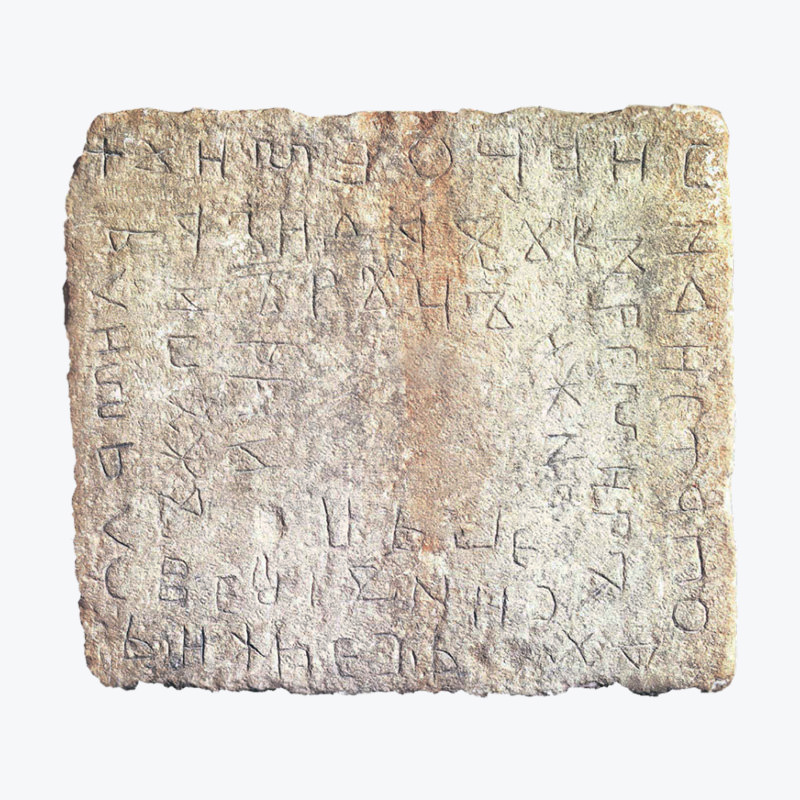
One of the few remains and one of the most significant is certainly the famous Humac Stone Tablet, an inscription in old Croatian Cyrillic with addition of several Glagolitic letters from the 12th century. The inscription tells us about the construction of the church of St. Mihovil to a parish of unknown name. One of numerous medieval monuments in Ljubuški are certainly stećak tombstones. About 600 stećak tombstones have been recorded at 45 sites in Ljubuški. Well-known archaeologist Radoslav Dodig states the number of 617 stećak tombstones. However, what Ljubuški is best known for is the medieval tower on the top of the Butorovica hill above Ljubuški, which was declared a national cultural monument in 2004. Folk tradition associates its construction with herceg(duke) Stjepan Vukčić Kosača, although it is older than him. When the Turks conquered Ljubuški in 1472, they built ramparts around the tower, built houses and a mosque in 1558.
After the Ottoman rule, the Austro-Hungarian Monarchy came to power. The Berlin Congress gave Austria consent to occupy BiH. The army of the Austrian general Jovanović entered Ljubuški on August 2, 1878 from the direction of Vrgorac. The period of the Austrian administration (1878-1918) meant a revival for Ljubuški in terms of infrastructure, agriculture, industry, culture and administration. In 1884, culturally aware Franciscans led by Fr. Anđelo Nuić, following the example of numerous European museums, established their museum in Humac near Ljubuški. The museum in Humac is also the oldest museum in BiH. Also, it is important to note that next to the museum in the monastery on Humac is a rich library which today has over 20,000 titles from the period of the 16th to the 19th century and covers almost all areas of natural and social sciences.
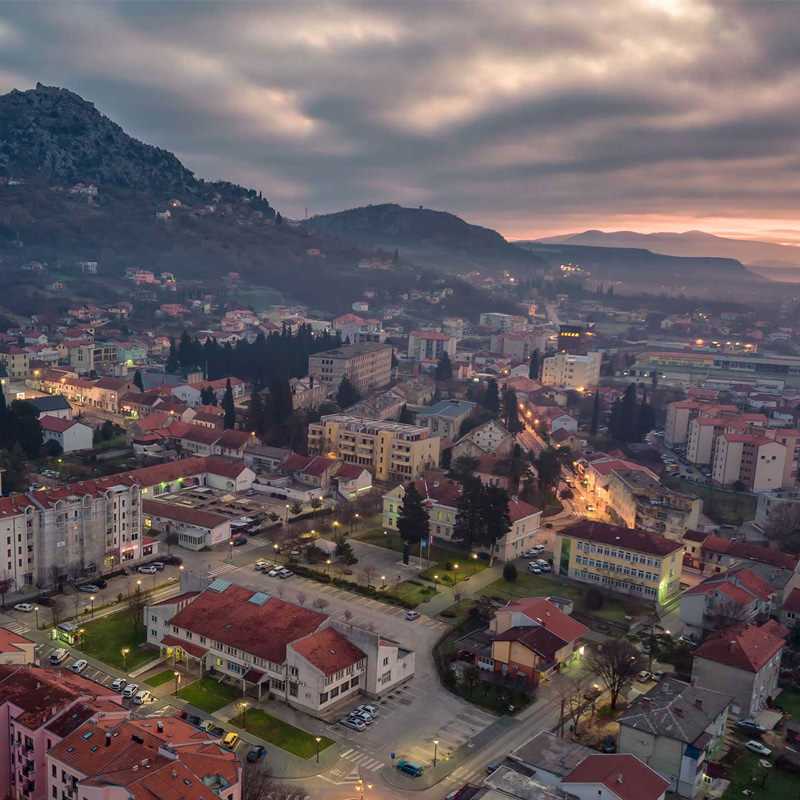
The First World War (1914-1918) brought Ljubuški: famine, poverty, Spanish flu and other troubles. A similar situation lasted during the Kingdom of Yugoslavia (1918-1941). The period from 1945 to 1990 is related to the communist and socialist system of the Federal People’s Republic of Yugoslavia (SFRY). During that period, many Croats emigrated. Nevertheless, Ljubuški developed in an industrial and agricultural sense, although the pace was not fast. After the Dayton Peace Agreement, Ljubuški entered the County no. 8 together with Grude, Posušje and Široki Brijeg.
For more info visit page Tourist borad city of Ljubuški (link).
What to visit in Ljubuški
1. KRAVICA WATERFALL
One of the most beautiful travertine spells in Europe, it is hidden 7 km from Ljubuški. The nine named river Trebižat creates breathtaking scenes. One of them is the Monument of Nature 28 m high and 120 m wide, which will provide you with an unforgettable water concert.
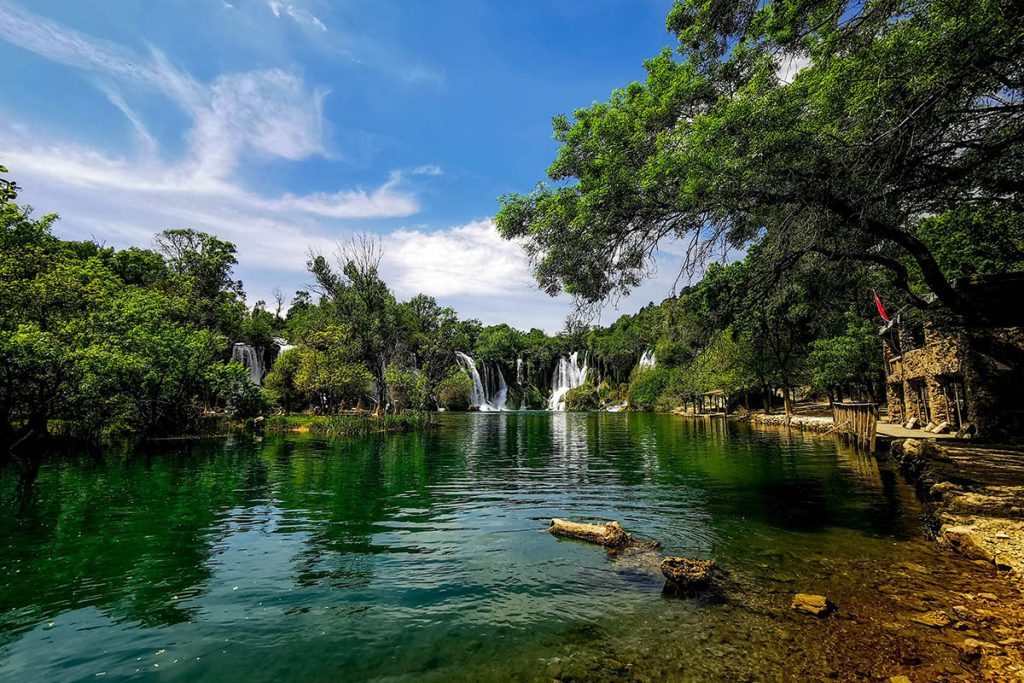
2. KOĆUŠA WATERFALL
Waterfall Koćuša, is located 18 km upstream from Kravica, with its 5 meters high and 50 meters wide. Water falls over sedimentary and tufa rocks, which nature has been creating for centuries, in the idyllic atmosphere of greenery, rocks, and water, buildings from another time also contribute, which still work unhindered on Trebizat today – mills and columns.
3. MUSEUM HUMAC
The oldest museum in BiH is located between two natural pearls and is founded in 1884, which preserves the oldest monument written in the Croatian language in BiH, the Humac Stone Tablet from the 12th century. By visiting the museum, the Franciscan monastery of St. Anthony of Padua in Humac, every visitor will enjoy a prehistoric journey that lasts incredible 16,000 years.
4. HERCEG STJEPAN LJUBUŠKI FORTRESS
Erected on a solid, rocky position, at 396 meters above sea level, on the hill Butorovici, there are imposing walls of the fortress of Herceg Stjepan. According to written sources first mentioned in 1444 under the name Lubussa.
5. ROMAN MILITARY CAMP IN GRACINE LJUBUŠKI
Descending the miraculous riverbed of Trebižat on the left side of the bank, southwest of Ljubuški we can find Roman military camp Gračine, which will provide you with another incredible journey in antiquity.
Do you want to experience Ljubuški firsthand, enjoy stunning nature, picturesque views of the source Trebižat river, and learn all about its rich history? Contact us.
We will create a journey tailored to your preferences.


